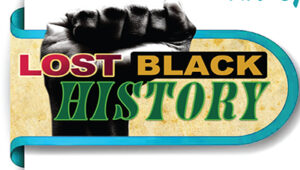By Don Valentine
Eminent Domain, the pernicious bane of Black land owners, left its mark on Gotham city. The legal doctrine of “Eminent Domain” is derived from the Fifth Amendment to the Constitution: “nor shall private property be taken for public use, without just compensation.” That doctrine destroyed an entire Manhattan hamlet that was once owned by Blacks. In 1856, New York used its power of eminent domain to condemn the properties within the boundaries of the proposed Central park to evict the predominantly Black residents of Seneca Village.
Seneca Village began in 1825 when Andrew Williams, a 25-year-old Black cobbler, diligently saved up $125 and bought the first three lots. That $125 in 1825 is equivalent in purchasing power to about $4,000 today. Epiphany Davis, a store clerk, bought 12 lots for $578, and the AME Zion Church purchased another six lots. As the Central Park Conservatory website annotated, “One of few African-American enclaves at the time, Seneca Village allowed residents to live away from the more built-up sections of downtown Manhattan and escape the unhealthy conditions and racial discrimination they faced there.”
New York passed abolition in 1827, but the racial caste system was hard to overcome. Blacks in most of the city were treated with the same old racial animus as always. Seneca acted as an oasis and a safe rest stop on the Underground railroad to Canada. Sepia travel magazine recorded, “… historians believe the name Seneca is derived from a distortion of the country-name ‘Senegal,’ where many of the village’s residents may have come from. The word ‘Senegal’ may also have been a code word used by Underground Railroad fugitives.”
A cursory A.I. search found a theme of other states emulating the Central Park theft. For instance, In Akron, Ohio a freeway built in the 1970s through a Black community in Akron was supposed to reinvigorate the city’s downtown, but instead it became known as the “road to nowhere.” In Overtown, Miami the construction of I-95 and I-395 displaced around 10,000 people, and destroyed a self-sufficient Black community and the cultural area known as the “Harlem of the South.” Santa Monica used eminent domain to seize Silas White’s property, which he had planned to develop into the Ebony Beach Club. The land was demolished to make way for public parking. To learn more read, Eminent Domain and African Americans: What is the Price of the Commons? by Dr. Mindy Fullilove.


